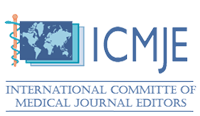АНТИМИКРОБНЫЙ ЭФФЕКТ МОНО- И БИЯДЕРНЫХ ИОДИДНЫХ КОМПЛЕКСОВ ПЛАТИНЫ И ПАЛЛАДИЯ
Аннотация
Обоснование. Высокая резистентность микроорганизмов-патогенов побуждает ученых всего мира вести исследования с целью получения новых антимикробных средств. Комплексы платиновых металлов остаются в поле зрения исследователей в плане потенциальных антибактериальных веществ.
Цель. Скрининг антимикробных свойств иодидных комплексов платины и палладия.
Материалы и методы. Оценивали антимикробную активность синтезированных моно- и биядерных комплексов Pt (II) и Pd (II), содержащих мостиковые и концевые иодидные лиганды. В качестве тест-организмов использовали стандартные штаммы микроорганизмов Pseudomonas putida, Bacillus subtilis, Aspergillus niger. Скрининг проведен с использованием диск-диффузионного метода и метода серийных разведений.
Результаты. Все исследуемые комплексные соединения обладают способностью ингибировать метаболический рост микроорганизмов в разной степени. Катионный комплекс платины [(NH3)2Pt(μ-I)2Pt(NH3)2]Cl2 проявляет больший эффект ингибирования по сравнению с комплексом-неэлектролитом [(NH3)2Pt(μ-I)2PtCl2], для которого активность сопоставима с моноядерным комплексом цис-Pt(NH3)2I2. Самый высокий антибактериальный эффект показал биядерный комплекс палладия [enPd(μ-I)2Pden]Cl2, обладающий большей лабильностью по сравнению с комплексами платины. Минимальная ингибирующая концентрация комплексов составила >110 мкм.
Заключение. Антимикробная активность комплексов по отношению к изученным тест-культурам зависит от состава и строения комплекса, природы центрального атома, числа координационных центров, их заряда, прочности связей лигандов с комплексообразователем.
Скачивания
Литература
Grenkova T. A., Sel'kova E. P., Gusarova M. P., Ershova O. N., Aleksandrova I. A., Sazykina S. Yu., Kurdyumova N. V. Kontrol' za ustoychivost'yu mikroorganizmov k antibiotikam, antiseptikam i dezinfitsiruyushchim sredstvam [Control over the resistance of microorganisms to antibiotics, antiseptics and disinfectants]. Epidemiologiya i vaktsinoprofilaktika [Epidemiology and Vaccine prevention], 2014, no. 1(74). pp. 29-33.
Opredelitel' bakteriy Bedzhi [The determinant of bacteria of Berge]. Dzh. Khoul (editor). Moscow: MIR Publ., 1997. 421 p.
Salishcheva O.V., Gel'fman M.I., Vasil'eva G.V. Biyadernye kompleksy palladiya (II) s iodidnymi mostikami [Binuclear palladium (II) complexes with iodide bridges]. Izvestiya vysshikh uchebnykh zavedeniy. Seriya: Khimiya i khimicheskaya tekhnologiya [Russian Journal of chemistry and chemical technology], 2006, vol. 49, no. 1, pp. 12-14.
Tkacheva A.R., Sharutin V.V., Sharutina O.K., Shlepotina N.M., Kolesnikov O.L., Shishkova Yu.S. et. al. Tetravalent Platinum Complexes: Synthesis, Structure, and Antimicrobial Activity. Journal General Chemistry, 2020, vol. 90, no.4, pp. 599-603. https://doi.org/10.31857/S0044460X20040150
Shlepotina N.M., Kolesnikov O.L., Shishkova Yu.S., Galagudin I.V., Kalita E.V., Tkacheva A.R., Kim D.G. Antimikrobnyy effekt nekotorykh soedineniy platiny i odnogo iz proizvodnykh piridiniya v otnoshenii Escherichia coli [Antimicrobial effect of some platinum compounds and one of the pyridinium derivatives on Escherichia coli]. Rossiyskiy immunologicheskiy zhurnal [Russian journal of immunology], 2019, vol. 13(22), no. 3, pp. 1313-1318. https://www.rusimmun.ru/jour/article/view/525?locale=ru_RU
C. Costa, A. Conte, M. Alessandro, D. Nobile, J. Barros-Velázquez (editor). Antimicrobial Food Packaging. Chapter 31 - Use of Metal Nanoparticles for Active Packaging Applications. Academic Press Publ., 2016, рр. 399-406. https://doi.org/10.1016/B978-0-12-800723-5.00031-0
J.M. Miranda, A.C. Mondragón, A. Lamas, P. Roca-Saavedra, I.S. Ibarra, J.A. Rodriguez, A. Cepeda, C.M. Franco, J. Barros-Velázquez (editor). Antimicrobial Food Packaging. Chapter 8 - Effect of Packaging Systems on the Inactivation of Microbiological Agents. Academic Press Publ., 2016, рр. 107-116. https://doi.org/10.1016/B978-0-12-800723-5.00008-5
Baartzes N., Jordaan A., Warner D. F., Combrinck J., Taylor D., Chibale K., Smith G. S. Antimicrobial evaluation of neutral and cationic iridium (III) and rhodium (III) aminoquinoline-benzimidazole hybrid complexes. European Journal of Medicinal Chemistry, 2020, vol. 206, 112694. https://doi.org/10.1016/j.ejmech.2020.112694
Chakraborty J., Saha M. K., Banerjee P. Synthesis, crystal structures and properties of two Pd (II) and Pt (II) complexes involving 3,5-diphenylpyrazole and NO2 donor ligands. Inorganic Chemistry Communications, 2007, vol. 10, no. 6, pp. 671-676. https://doi.org/10.1016/j.inoche.2007.02.028
Danaei M., Dehghankhold M., Ataei S., Hasanzadeh Davarani F., Javanmard R., Dokhani A., Khorasani S., Mozafari M. R. Impact of particle size and polydispersity index on the clinical applications of lipidic nanocarrier systems. Pharmaceutics, 2018, vol. 10, no. 2, 57. https://doi.org/10.3390/pharmaceutics10020057
Din M.I., Ali F., Intisar A. Metal based drugs and chelating agents as therapeutic agents and their antimicrobial activity. Revue Roumaine de Chimie, 2019, vol. 64, no. 1, pp. 5-17. https://doi.org/10.33224/rrch.2019.64.1.01
Dyshlyuk L., Babich O., Ivanova S., Vasilchenco N., Atuchin V., Korolkov I., Russakov D., Prosekov A. Antimicrobial potential of ZnO, TiO2 and SiO2 nanoparticles in protecting building materials from biodegradation. International Biodeterioration & Biodegradation, 2020, vol. 146, 104821. https://doi.org/10.1016/j.ibiod.2019.104821
Elgemeie G. H., Azzam R. A., Osman R. R. Recent advances in synthesis, metal complexes and biological evaluation of 2-aryl, 2-pyridyl and 2-pyrimidylbenzothiazoles as potential chemotherapeutics. Inorganica Chimica Acta, 2020, vol. 502, 119302. https://doi.org/10.1016/j.ica.2019.119302
Gel'fman M.I., Salishcheva O.V. Binuclear platinum iodo complexes. Russian Journal of Inorganic Chemistry, 2002, vol. 47, no. 11, pp. 1698-1700.
Haffaressas Y., Ayad N., Boussayoud R., Mouffok F. Opportunistic bacteria: pseudomonas putida. Siberian Journal of Life Sciences and Agriculture, 2018, vol. 10, no. 5, pp. 132-143. https://doi.org/10.12731/wsd-2018-5-132-143
Jamróz E., Kulawik P., Kopel P. The Effect of Nanofillers on the Functional Properties of Biopolymer-Based Films: A Review. Polymers, 2019, vol. 4, 675. https://doi.org/10.3390/polym11040675
Mawnai I.L., Adhikari S., Dkhar L., Lakshmi Tyagi J., Poluri K.M., Kollipara M.R. Synthesis and antimicrobial studies of half-sandwich arene platinum group complexes containing pyridylpyrazolyl ligands. Journal of Coordination Chemistry, 2019, vol. 72, no. 2, pp. 294-308. https://doi.org/10.1080/00958972.2018.1556791
S. Rajendran, S. S. Prabha, R. J. Rathish, G. Singh, A. Al-Hashem. Nanotoxicity. Prevention and Antibacterial Applications of Nanomaterials. Micro and Nano Technologies. Chapter 12 - Antibacterial activity of platinum nanoparticles. Elsevier Publ., 2020, pp. 275-281. https://doi.org/10.1016/B978-0-12-819943-5.00012-9
Rossi G. G., Guterres K. B., Silveira C. H., Moreira K. S., Burgo Th. A. L., Iglesias B. A., Anraku-de-Campos M. M. Peripheral tetra-cationic Pt(II) porphyrins photo-inactivating rapidly growing mycobacteria: First application in mycobacteriology. Microbial Pathogenesis, 2020, vol. 148, 104455. https://doi.org/10.1016/j.micpath.2020.104455
Rubino S., Busà R., Attanzio A., Alduina R., Stefano V.D., Assunta M., et. al. Synthesis, properties, antitumor and antibacterial activity of new Pt (II) and Pd (II) complexes with 2,2′-dithiobis(benzothiazole) ligand. Bioorganic and Medicinal Chemistry, 2017, vol. 25, no. 8, pp. 2378-2386. https://doi.org/10.1016/j.bmc.2017.02.067
Rubino S., Pibiri I., Minacori C., Alduina R., Di Stefano V., Orecchio S., et. al. Synthesis, structural characterization, anti-proliferative and antimicrobial activity of binuclear and mononuclear Pt (II) complexes with perfluoroalkyl-heterocyclic ligands. Inorganica Chimica Acta, 2018, vol. 483, no. 1, pp.180-190. https://doi.org/10.1016/j.ica.2018.07.039
Sabounchei S.J., Shahriary P., Salehzadeh S., Gholiee Y., Chehregani A. Spectroscopic, theoretical, and antibacterial approach in the characterization of 5-methyl-5-(3-pyridyl)-2,4-imidazolidenedione ligand and of its platinum and palladium complexes. Comptes Rendus Chimie, 2015, vol. 18, no. 5, pp. 564-572. https://doi.org/10.1016/j.crci.2014.04.013
Salishcheva O.V., Prosekov A.Yu., Dolganyuk V.F. Antimicrobial activity of mononuclear and bionuclear nitrite complexes of platinum (II) and platinum (IV). Food Processing: Techniques and Technology, 2020, vol. 50, no. 2, pp. 329-342. https://doi.org/10.21603/2074-9414-2020-2-329-342
Unuofin J. O., Oladipo A. O., Msagati T. A.M., Lebelo S. L., Meddows-Taylor S., More G. K. Novel silver-platinum bimetallic nanoalloy synthesized from Vernonia mespilifolia extract: Antioxidant, antimicrobial, and cytotoxic activities. Arabian Journal of Chemistry, 2020, vol. 13, no. 8, pp. 6639-6648. https://doi.org/10.1016/j.arabjc.2020.06.019
Yufanyi D. M., Abbo H. S., Titinchi S. J.J., Neville T. Platinum (II) and Ruthenium (II) complexes in medicine: Antimycobacterial and Anti-HIV activities. Coordination Chemistry Reviews, 2020, vol. 414, 213285. https://doi.org/10.1016/j.ccr.2020.213285
Просмотров аннотации: 377 Загрузок PDF: 329
Copyright (c) 2021 Olesya V. Salishcheva, Alexander Yu. Prosekov

Это произведение доступно по лицензии Creative Commons «Attribution-NonCommercial-NoDerivatives» («Атрибуция — Некоммерческое использование — Без производных произведений») 4.0 Всемирная.





















































